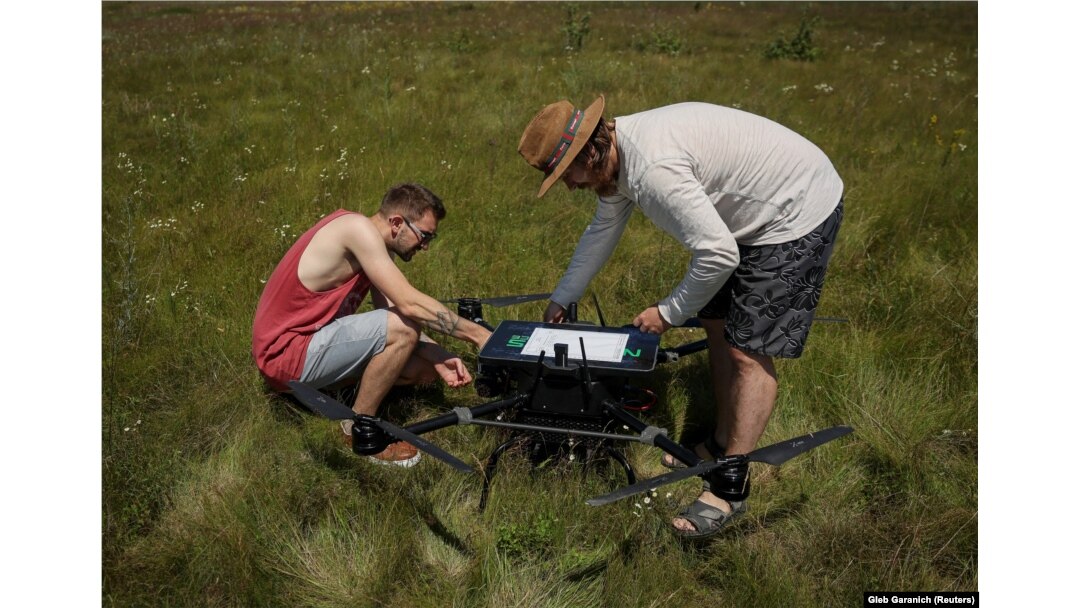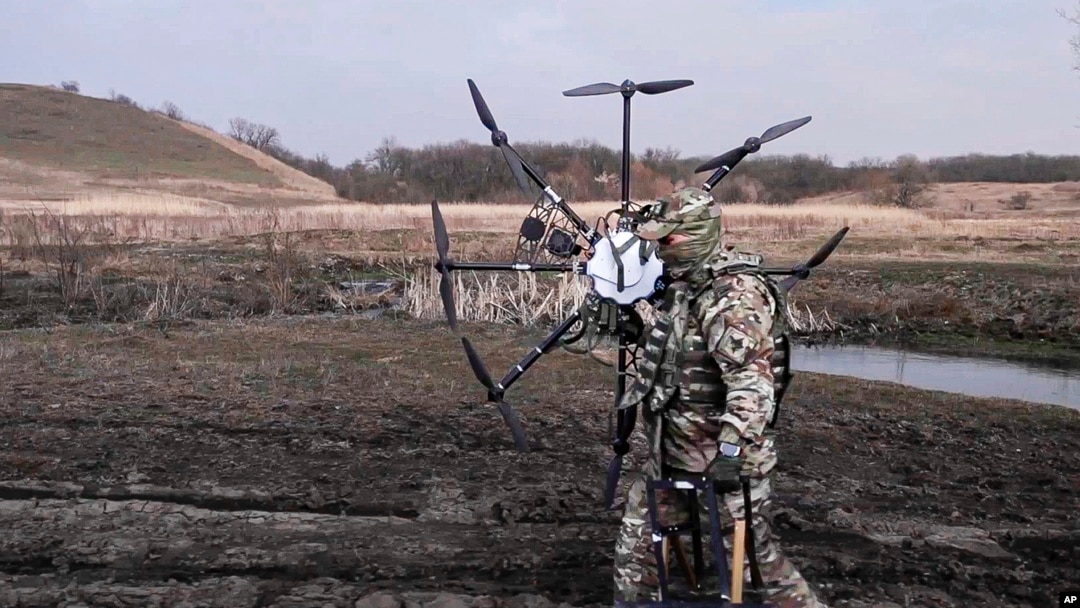A dystopian future in which swarms of killer drones hunt for human targets is drawing closer, but fully autonomous AI drones remain an elusive technology, at least on the battlefields of Ukraine.
"The issue of correct identification of enemy targets by drones still remains," says a spokesperson at Brave1, a Ukrainian government organization involved in the development of military technology.
The Russian invasion of Ukraine has fueled rapid advancement of drone technology that has enabled cheap, bomb-carrying quadcopters to take out targets worth millions of dollars. But in the arms race between drones and radio "jammers" that interrupt the signal between a drone and its controller, those defensive measures appear to be winning.

Employees of Ukraine's Swarmer drone company prepare an AI-enabled quadcopter for flight in the Kyiv region in June.
Ukrainian drone pilots are reported to be losing thousands of drones per month to Russian jamming devices. Russia's recent use of a wire-guided drone indicates the invading army is also struggling to overcome electronic warfare systems.
Some developers in Ukraine are focused on swarming drone systems that allow one pilot to fly multiple weaponized drones as one, but the top priority for Ukrainian drone developers is "minimizing the impact of electronic warfare," according to Brave1.
"Drones equipped with AI-assisted targeting modules do not require a connection to the operator during the engagement phase," the Brave1 spokesperson told RFE/RL. "The operator locks onto the target, then the AI takes over the targeting process independently, making it immune to enemy electronic warfare interference."
Such semi-autonomous drones could negate jamming measures. Once the AI tracking system takes over, the drone can cut its vulnerable radio signal between the drone and its controller and make its own "decisions."
A Ukrainian soldier fits a drone jamming device onto an armored vehicle in the Donetsk region in April.
With visual detection critical, AI drones would likely need to have significantly upgraded camera systems compared to the current generation of kamikaze drones in use by Ukraine and Russia. That would add costs that undercut the chief advantage of kamikaze drones: their low price.
Additionally, "the installation of an AI module increases the cost of the drone, complicating the process of scaling up and mass production," the Brave1 spokesperson says. "This is especially relevant for Ukraine, which does not have unlimited resources. Therefore, domestic manufacturers are currently working hard to reduce the cost of such drones."
Even relatively simple automated targeting systems appear to be facing challenges on the Russian side. Recent videos show target tracking software appears to have been deactivated by pilots of Russian kamikaze drones in favor of manual controls, and the potential for catastrophic error, especially in fully autonomous drones, appears to be a vexing obstacle.
"The manufacturers of these drones often argue that they are safe because the software can distinguish friendlies and civilians well, but we have a lot of anecdotal information from the U.S...and the war in Ukraine that this is not always the case," Michael Boyle, an associate professor at Rutgers University and author of a book on drone warfare, told RFE/RL.
Tracking features have been available for several years in consumer quadcopters that allow a drone pilot to identify a subject such as a vehicle with the touch of a finger on the controller's screen. But tracking a sports car is significantly less demanding than locking on to camouflaged and evasive targets in a smoke-filled war zone with a drone that will explode against anything it hits.
Another danger is hacking, Boyle says. "If the enemy starts generating friendly fire loitering munitions attacks by hacking or spoofing their signal, the risks of using these drones will skyrocket and we may find soldiers far more reluctant to use them," he says.
Drones before a swarm demonstration during a NATO exercise in Holland in November 2021.
Away from the battlefields of Ukraine, both China and the United States are believed to be building up armies of drones likely to play a significant role in any future conflict.
China dominates the world's market in drones, largely thanks to the Shenzhen manufacturer DJI. Since its first quadcopter was launched in 2013, the company has remained firmly ahead of the competition in both features and sales. Today DJI boasts some 70 percent of the entire world's drone market.
DJI has denied links to the Chinese military but analysts point to large investments from Beijing as evidence that the authoritarian state may have a hand in operations of the multibillion-dollar company.
Boyle says it is "clear" Beijing is developing "swarming drones to attack naval vessels and blind them in a potential conflict over Taiwan."
The drone expert adds that "the U.S. has been carefully paying attention to the use of drones in Ukraine and is investing a lot in production of small, cheap. and disposable drones in the Replicator program. They are more confident that wars will be fast, lethal, and fought with a blizzard of small drones in the future," he says.


